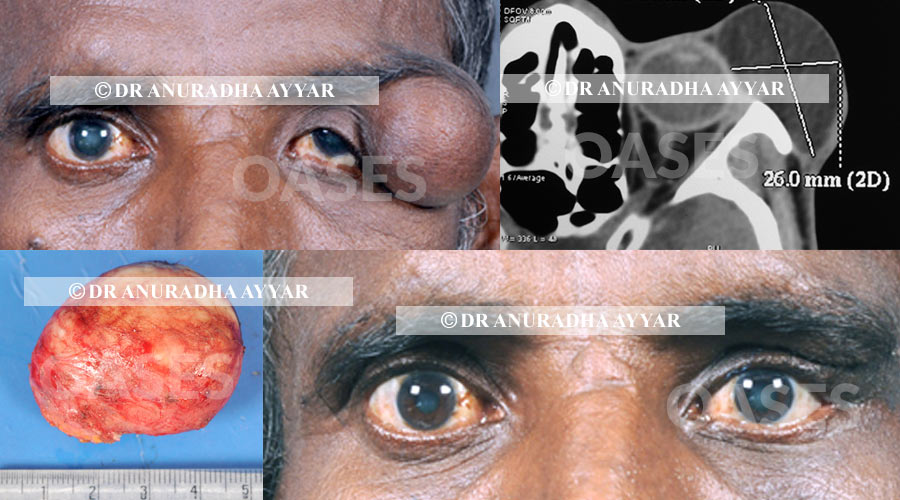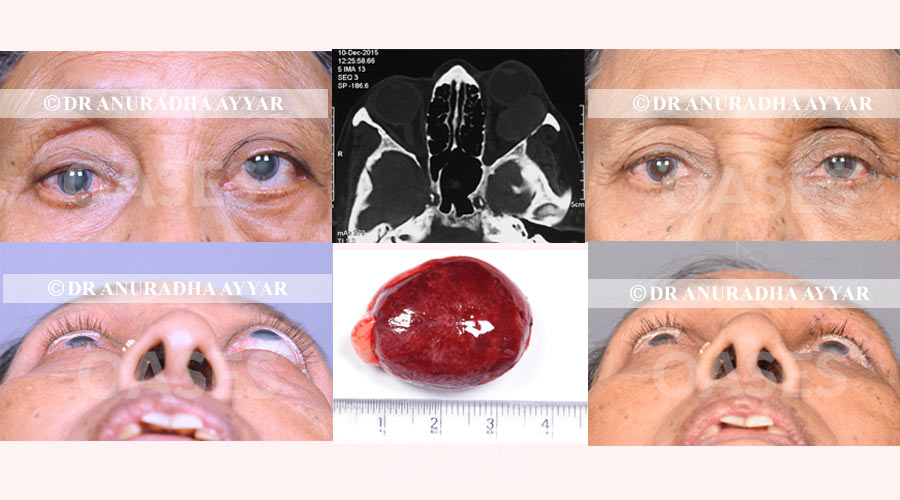Treatments at OASES Eye Care Center
Orbit
Orbital diseases, tumors, trauma mandates are examination by an Oculoplastic Surgeon at OASES Eye Care Center.
Patient - 1

The orbit is the space that surrounds the eyeball, formed by bone on most sides. The orbit is packed with important structures: eyeball, muscles, lacrimal gland, many nerves, arteries, veins, fat.
Orbit is known as a Pandora's box, as it has an array of tumors, and disease that may arise in any of the structures above. Orbital diseases, tumors, trauma mandates examination by an Oculoplastic (also known as Ophthalmic plastic) Surgeon.
Disorders of the orbit are an area in which Oculoplasty surgeons are specially trained.
Here is a 3 year old child who was brought to us with a right lower eyelid swelling that was noticed since 2 months.
Clinically, a lymphangioma was suspected (a type of mass that contained altered blood). The diagnosis and extent of the mass was confirmed with imaging. The mass was in the lower part of the orbit and quite large.
Surgery was performed under general anesthesia through a transconjunctival approach.
The mass was removed in totality and sent for pathological examination, which again confirmed our initial diagnosis.
The child did very well post surgery. No skin scar. No skin sutures. Fast and smooth recovery.
Contact UsPatient - 2

This child was operated for a dermoid under sedation. An upper eyelid incision was used to achieve best cosmesis. The sample was examined histopathologically to confirm the diagnosis.
The sutures used were absorbable and child recovered very well with a hidden barely visible scar.
Contact Us



